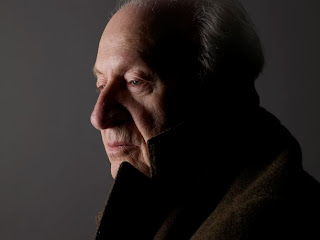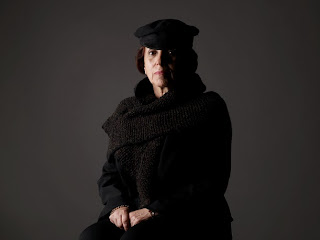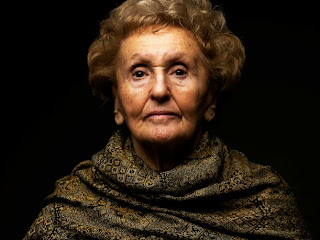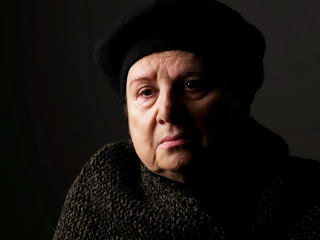The eldest of four children, Moshe Baran was born in 1920 in Horodok – a shtetl in Poland. The population of Horodok was 90% Jewish, with approximately 300 families. There were two synagogues, a Hebrew day school, a bank, a free loan association, committees to help the needy, a variety of Zionist organizations, even amateur theatre – it was a cohesive, self-sufficient community.
The Nazis broke the Ribbentrop pact and attacked the Soviet Union in the summer of 1941. Five days later, they arrived in Moshe’s hometown. The edicts that went in effect soon after put the Jewish population outside of the protection of the law. Several months later, Moshe and his family were forced out of their homes and confined to a ghetto – a space of 15-20 homes for hundreds of families. Surrounded by barbed wire, guarded by Germans and local police, denied freedom of movement and opportunity to obtain food, lacking in sanitary facilities, the inhabitants began to hear rumors about the destruction of neighboring communities by the Germans. A number of young people then began to plan. However, neither escape nor resistance was actually feasible at the time – they had no weapons and nowhere to go.
In the spring of 1942, the Germans told the Judenrat to provide a number of able-bodied young men for various projects. Approximately 25-30 were selected and sent to neighboring towns. Moshe and his brother were among them. Moshe was assigned to work on building a rail line, but his brother was sent elsewhere.
In July 1942, the ghetto of his hometown was liquidated. His family survived in hiding, and joined him later in the ghetto where he was residing at the time. From six in the morning until evening, Moshe worked twelve-hour shifts, all the while receiving barely enough food to qualify as sustenance. The prisoners all knew that as soon as the work was done, they would be liquidated next. By this time, Moshe and his friends had heard about the Resistance, but they knew that without weapons, they had no hopes of joining.
The Germans who guarded them were abusive – constantly scolding, shouting, and hitting the prisoners. Only one of them, a lieutenant named Miller, did not take part in those hateful acts.
Two of Moshe’s friends worked in a warehouse where they sorted out weapons captured from the Russians. They eventually worked out a plan where they would take out weapons wrapped in rags and hide them in a nearby junkyard. On his way home from work one day, Moshe asked the sympathetic lieutenant if he could retrieve something from the pile of junk. Thus, Moshe successfully smuggled gun parts into the Ghetto.
Moshe and his friends knew of a woman who was familiar with the area, and knew where the partisans were. She would lead them to a nearby encampment, where local Jewish escapees had set up a camp in the forest. In return, she asked if she and her two little children could come along. They escaped one night, after clearing out a crawlspace underneath the barbed wire fence. Miraculously, they made it to the Jewish encampments without incident.
About a week later, two Russian officers were passing by. It turned out they were sent to organize the resistance movement - but it also turned out they were Jewish, so Moshe asked them to help him join the resistance. Because Moshe had weapons hidden in the Ghetto, the officers agreed.
The officers eventually gave Moshe the name of a local farmer who would help bring the weapons out. Moshe used the occasion to pass a note to his family in the Ghetto through the farmer. He wanted to facilitate their escape. Moshe’s brother, sister, and mother escaped during several successful smuggling operations. Unfortunately, on March 19th - two days after the last escape - the Ghetto was liquidated, and Moshe’s father, younger sister, and other relatives perished, along with several thousand other Jews from the local areas.
Moshe joined the partisans, taking part in underground activities until the spring of 1944, when the advancing Soviet army liberated the area. He took part in ambush and sabotage operations with the partisans and was in charge of recovering weapons dropped from Russian planes. As was the fate of most eastern European partisans after the liberation of their area, Moshe was drafted into the Soviet army. But his bookkeeping abilities got him attached to the local staff of the battalion as the treasurer’s assistant, which kept him well away from the front lines.
After the war’s end, Moshe eventually made it back to Russia; but as a Polish citizen, he as eligible for a travel permit back to Poland, according to the rules of the time. In Poland, he connected with the Bricha, an organization whose purpose was to smuggle Jews from Europe to Palestine.
Eventually arriving in Austria, Moshe met his future wife Malka in one of the American zones, who was herself a survivor of a forced labor camp in Poland. In 1948, Malka left for the east, but Moshe and his family were unable to follow: his mother’s niece, who was living in Shreveport, Louisiana at the time, impored them to come to the United States. Though Moshe was committed to Malka and wished to marry her eventually, the family ultimately decided to take the opportunity and come to the United States.
Moshe settled in New York, eventually marrying Malka and bringing her back from Israel. In New York, Malka worked for a number of years as the director of a Jewish preschool and Moshe was employed for many years in the real estate industry. In 1993, Moshe and his wife moved to Pittsburgh after retirement. One of their two daughters settled there in a neighborhood called Squirrel Hill, where the Barans found a welcoming Jewish community, and where Moshe lives to this day, active in the community and as a public speaker and blogger. He writes the blog Language Can Kill: Messages Of Genocide, and speaks regularly about his life in the partisans and about the destructive power of hatred, which can have devastating consequences if left unchecked.
This post was written by Isaac Munro, Moshe's grandson, with editorial help from the Jewish Partisan Educational Foundation.
 Joseph Greenblatt was born in Warsaw in 1915. He learned about resistance from his father, an army captain who had fought for Polish independence during WWI. At eighteen, Joe enlisted in the Polish army as an infantryman, becoming an officer in 1938. In 1939 he was mobilized and sent to the Polish-German border. He witnessed the German invasion directly and fought for almost twenty days before being taken prisoner and sent to a German POW camp. It was in the camp that he began to establish connections with the newly formed Armia Krajowa (AK). The AK hijacked a German truck, transporting Joe to a hospital, freeing him and his fellow prisoners.
Joseph Greenblatt was born in Warsaw in 1915. He learned about resistance from his father, an army captain who had fought for Polish independence during WWI. At eighteen, Joe enlisted in the Polish army as an infantryman, becoming an officer in 1938. In 1939 he was mobilized and sent to the Polish-German border. He witnessed the German invasion directly and fought for almost twenty days before being taken prisoner and sent to a German POW camp. It was in the camp that he began to establish connections with the newly formed Armia Krajowa (AK). The AK hijacked a German truck, transporting Joe to a hospital, freeing him and his fellow prisoners. When Germany surrendered, Joe was working as the commander of a camp of German POWS. After the war Joe went to work for the Irgun under the command of Menachem Begin, traveling between Belgium and Israel as an arms dealer. Visit www.jewishpartisans.org for more about Joseph Greenblatt, who passed away on March 11, 2003 at the age of 87, including four videos of him reflecting on his time as a partisan.
When Germany surrendered, Joe was working as the commander of a camp of German POWS. After the war Joe went to work for the Irgun under the command of Menachem Begin, traveling between Belgium and Israel as an arms dealer. Visit www.jewishpartisans.org for more about Joseph Greenblatt, who passed away on March 11, 2003 at the age of 87, including four videos of him reflecting on his time as a partisan.





























